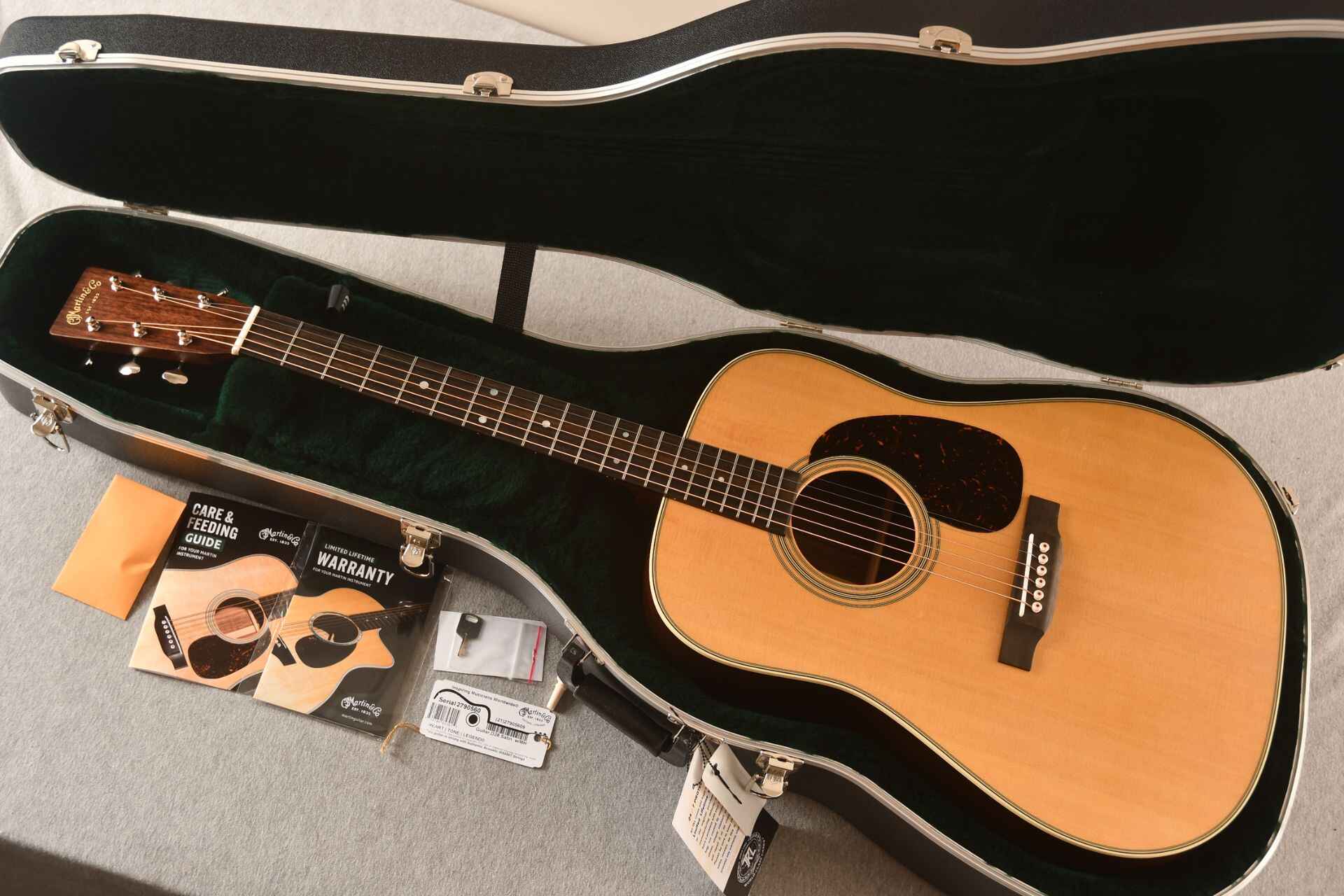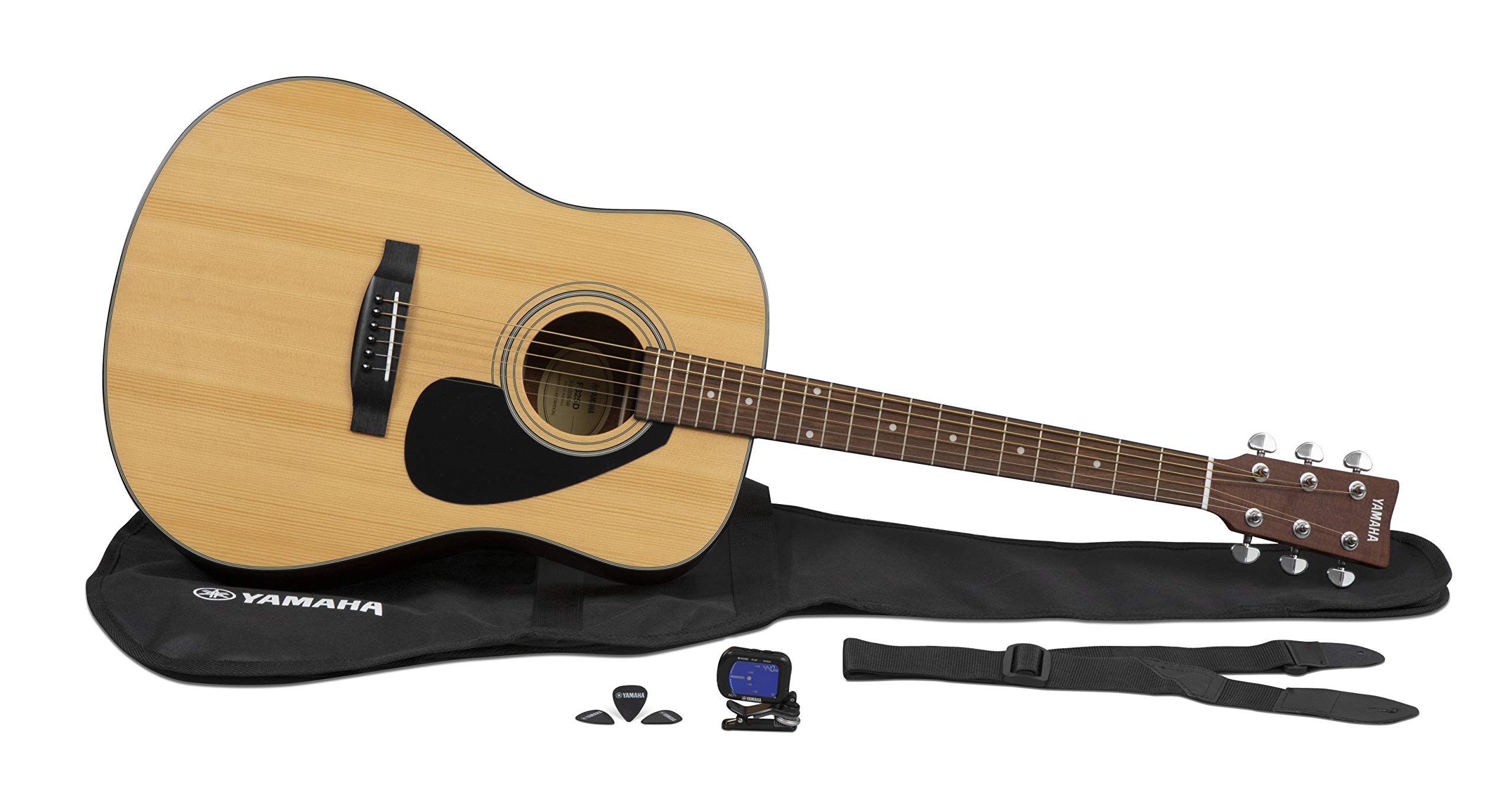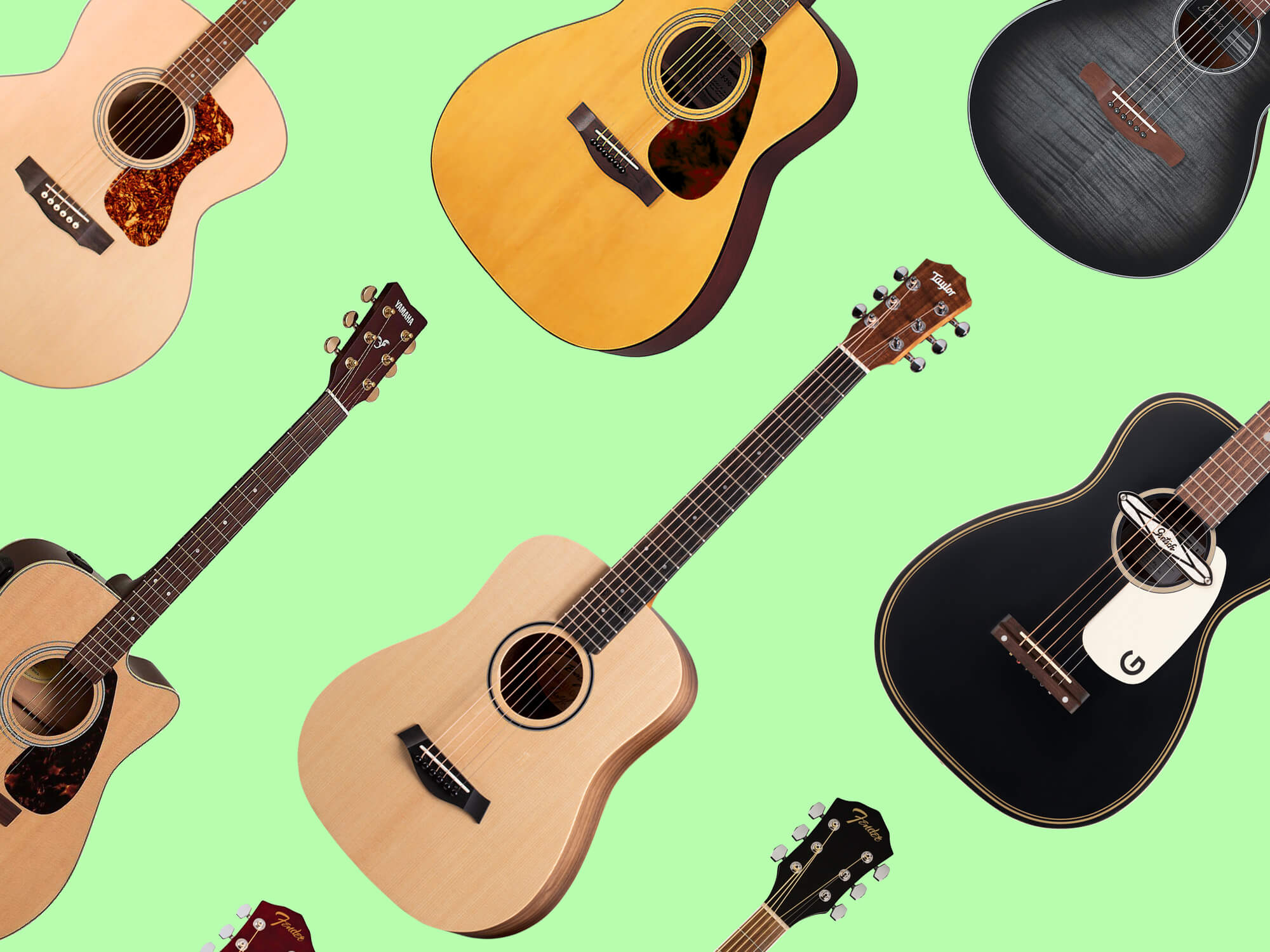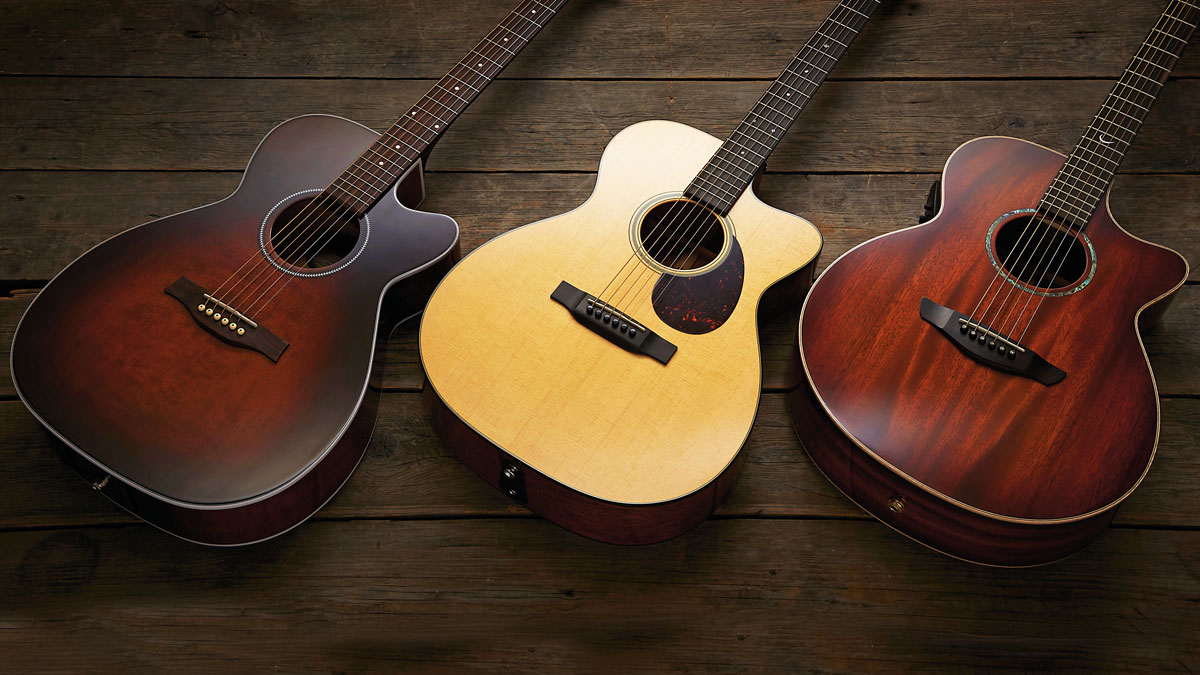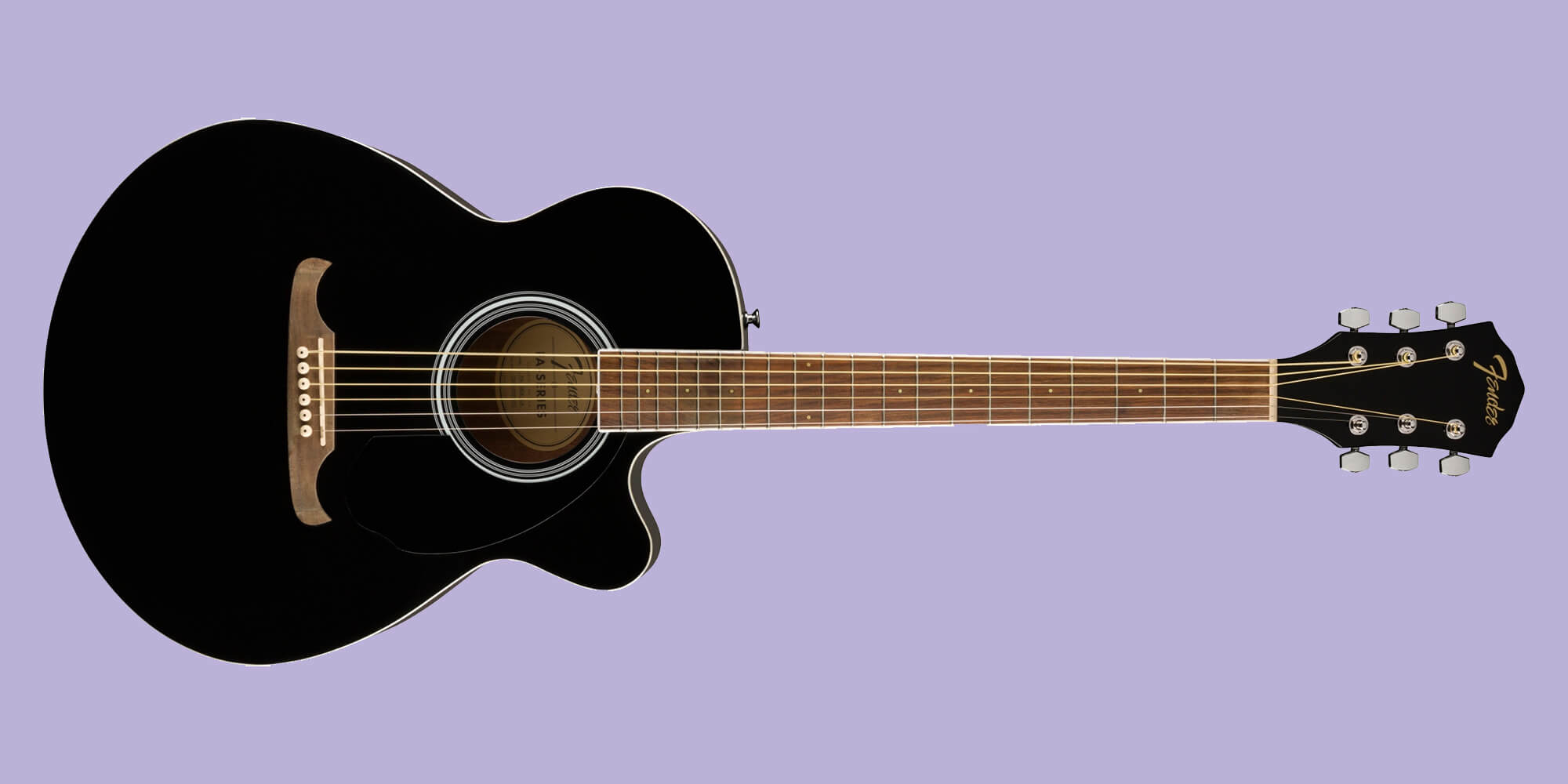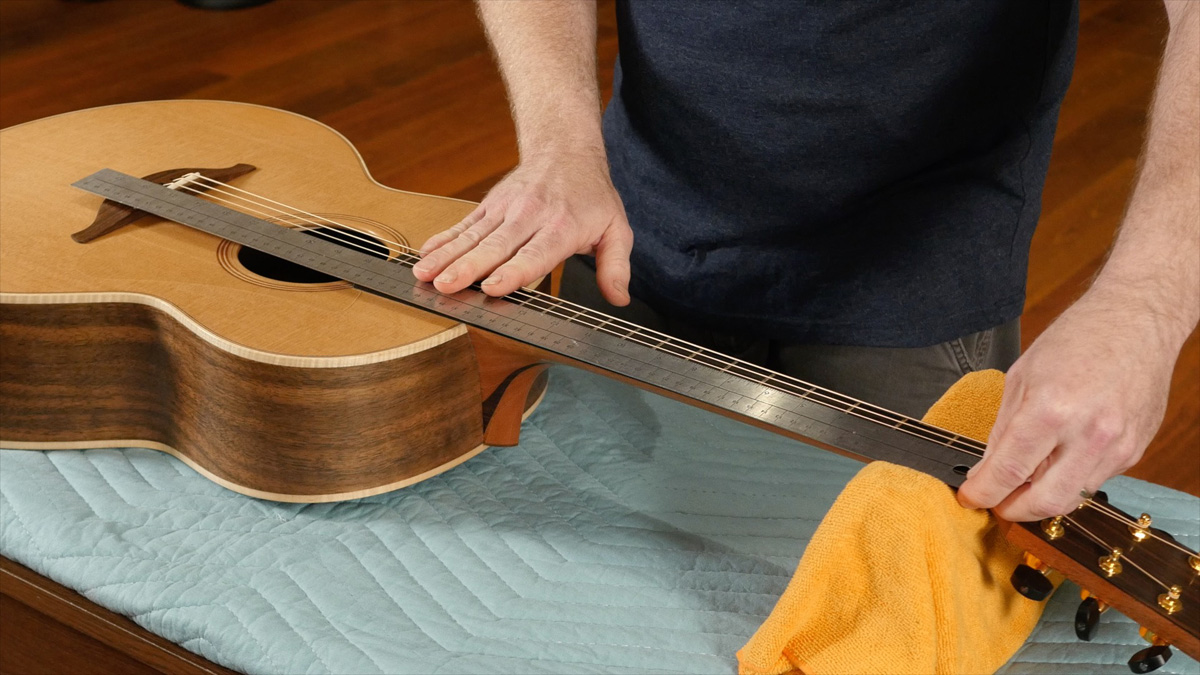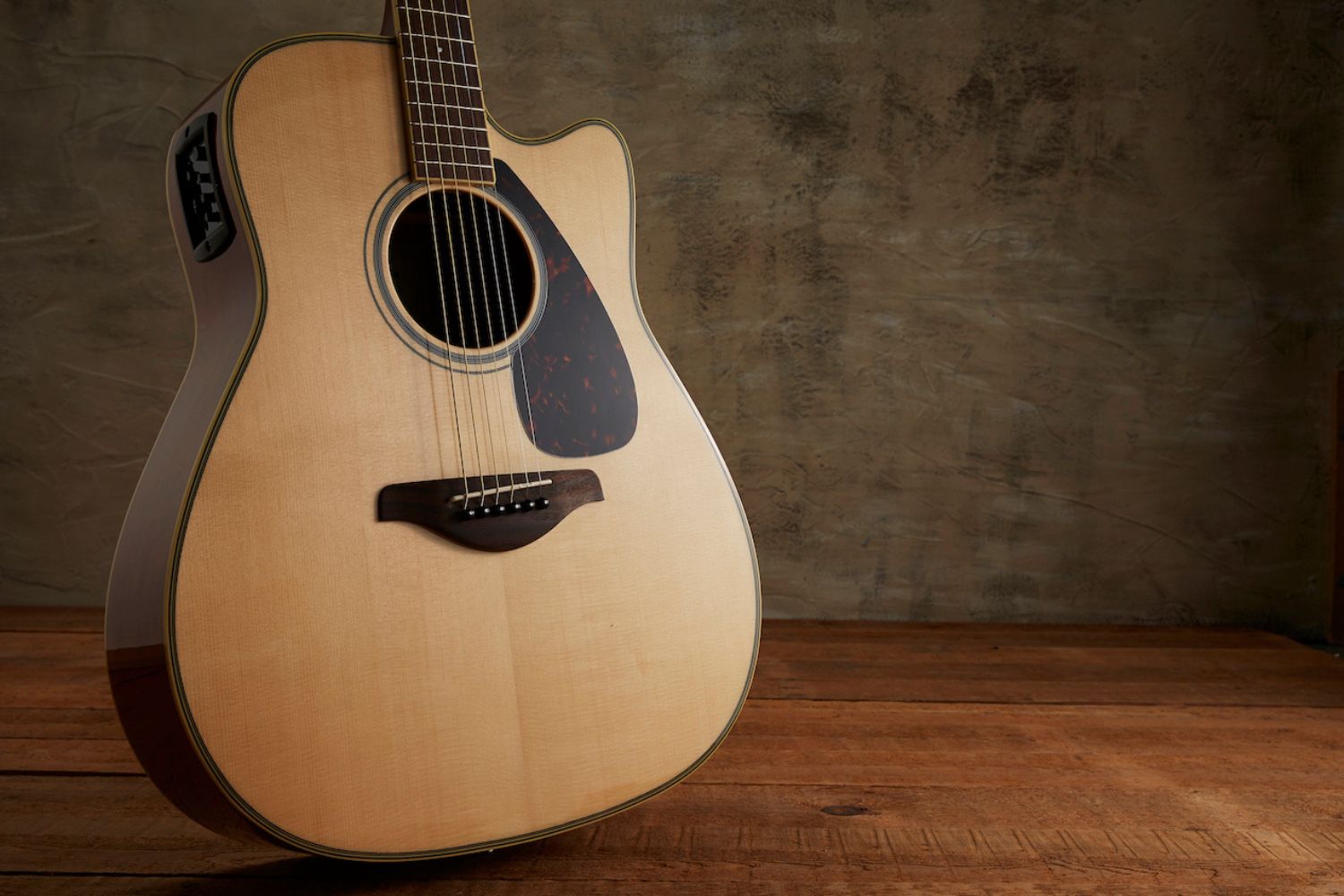Introduction
The dreadnought acoustic guitar is an iconic instrument with a rich history and a distinct sound. Its unique design and powerful resonance have made it a favorite amongst musicians in various genres, from folk and country to rock and blues. In this article, we will explore the origin, physical features, sound characteristics, famous musicians who use dreadnought acoustic guitars, the pros and cons of owning one, tips on choosing the right instrument, and essential maintenance techniques to keep your guitar in top shape.
When discussing acoustic guitars, the term “dreadnought” refers to a specific body shape and size. This style of guitar was first introduced by the C.F. Martin & Company in the early 20th century, named after the British battleship HMS Dreadnought. The large body and bold tone of the dreadnought design were intended to create a loud, commanding sound that could stand up to the volume of a full band or orchestra.
Over the years, the dreadnought acoustic guitar has become synonymous with its deep, booming bass, strong projection, and balanced tonal range. Its popularity among musicians of all skill levels is a testament to its versatility and ability to adapt to various playing styles and musical genres.
Whether you are a seasoned guitarist or a beginner looking for your first acoustic instrument, understanding the features and attributes of a dreadnought guitar is crucial in making an informed decision. In the upcoming sections, we will delve deeper into the history, physical characteristics, sound qualities, and the individuals who have embraced the dreadnought acoustic guitar in their musical journeys.
History of the Dreadnought Acoustic Guitar
The history of the dreadnought acoustic guitar dates back to the early 20th century. It was developed and popularized by the C.F. Martin & Company, a renowned guitar manufacturer based in the United States. The name “dreadnought” was inspired by the British battleship HMS Dreadnought, which was known for its size and power.
In 1916, the Martin Company introduced the first dreadnought guitar, the Model D-1, which featured a large body size and a powerful sound. This was a departure from the smaller, more delicate guitars that were common at the time. The goal was to create an instrument that could produce a louder, more robust sound to better match the emerging styles of music.
The dreadnought design quickly gained popularity among guitarists, particularly in the realm of folk and country music. Artists appreciated its ability to project sound and be heard over other instruments in a live performance setting. The guitar’s larger size and bold tone made it ideal for playing alongside banjos, fiddles, and other instruments in a band context.
One of the key factors that contributed to the success of the dreadnought acoustic guitar was its endorsement by prominent musicians. In the 1930s, the legendary American folk singer and social activist, Woody Guthrie, popularized the Martin D-18 dreadnought, establishing it as a staple in the folk music community.
Another influential figure in the history of the dreadnought guitar is the late country music icon, Johnny Cash. Known for his deep, resonant voice and distinctive guitar playing, Cash often relied on a Martin dreadnought to accompany his performances and recordings. His association with the dreadnought acoustic guitar further propelled its reputation and solidified its place in popular music.
Today, many guitar manufacturers produce dreadnought guitars, offering a wide range of options for musicians. While the Martin Company initially introduced this design, other companies, such as Gibson, Taylor, and Yamaha, have also contributed their own variations, incorporating unique tonal characteristics and modern construction techniques.
The history of the dreadnought acoustic guitar demonstrates how a single instrument design can revolutionize the music industry. Its influence can be heard across various genres, making it a beloved choice for guitarists of all backgrounds and styles.
Physical Features of a Dreadnought Acoustic Guitar
The dreadnought acoustic guitar is characterized by its distinct and recognizable physical features. Let’s explore the key elements that make up this iconic instrument.
Body Shape and Size: The dreadnought guitar typically has a large, square-shouldered body shape, which contributes to its deep and resonant tone. This design provides a greater volume and a robust low-end response, making it ideal for strumming chords and playing powerful rhythm parts.
Top Wood: The top, or soundboard, of a dreadnought guitar is usually made from spruce or cedar. Spruce is a common choice due to its excellent tonal properties, offering a balanced and versatile sound. Cedar, on the other hand, provides a warmer and more nuanced tone, which can be desirable for certain playing styles.
Back and Sides: The back and sides of a dreadnought guitar are typically constructed from mahogany, rosewood, or maple. Mahogany produces a warm, rich sound with a strong midrange presence, while rosewood provides a more pronounced low-end and enhanced projection. Maple, known for its bright and focused sound, adds clarity and definition to the overall tonal profile.
Neck and Fretboard: The neck of a dreadnought guitar is usually made from mahogany or maple, known for their stability and durability. The fretboard is typically made of rosewood or ebony, offering a smooth playing surface and contributing to the guitar’s overall tonal qualities.
Scale Length: The scale length of a dreadnought guitar is typically longer compared to other acoustic guitar styles, usually ranging from 25.4 to 25.5 inches. This longer scale length provides greater string tension, resulting in improved clarity, sustain, and a more balanced overall sound.
Bridge and Nut: The bridge of a dreadnought guitar is usually made of rosewood or ebony, providing a secure anchor for the strings. The nut, located at the top end of the neck, is typically made of bone or synthetic materials. Both the bridge and nut contribute to the transfer of vibrations from the strings to the body of the guitar.
Finish: The finish of a dreadnought acoustic guitar can vary, ranging from natural wood finishes to gloss or satin coatings. The choice of finish can affect the overall look and feel of the instrument but has minimal impact on the sound quality.
Hardware: Dreadnought guitars typically feature steel strings and are equipped with metal tuning machines to ensure precise and stable tuning. The bridge may have pins to hold the strings in place or a bridge plate with string holes for string attachment.
Understanding the physical features of a dreadnought acoustic guitar is essential when choosing the right instrument for your playing style and preferences. Each component contributes to the overall sound and playability, allowing you to create the desired tone and express your musical ideas with clarity and power.
Sound Characteristics of a Dreadnought Acoustic Guitar
The dreadnought acoustic guitar is renowned for its distinctive sound characteristics, which have made it a popular choice among musicians across different genres. Let’s explore the key elements that contribute to the unique tonal profile of a dreadnought guitar.
Deep and Booming Bass: One of the most notable features of a dreadnought guitar is its powerful low-end response. The large body size and square-shouldered design create ample airspace, allowing the sound waves to resonate and generate a deep, rich bass tone. This characteristic is particularly appealing for players who enjoy strumming chords and playing rhythm parts.
Pronounced Midrange: Alongside its robust bass response, a dreadnought guitar typically offers a strong and defined midrange presence. This enhances the projection and helps the guitar cut through a mix of other instruments, making it an excellent choice for performing in live settings or with a band.
Clear and Articulate High-End: Despite its emphasis on low and midrange frequencies, a well-built dreadnought guitar maintains clarity and articulation in the higher registers. This allows for expressive lead playing and intricate fingerstyle patterns to be heard with precision.
Balanced Tone: Dreadnought guitars are often revered for their well-balanced tonal response across the frequency spectrum. The combination of the deep bass, strong midrange, and clear highs results in a harmonically rich and pleasing overall sound. This versatility makes the dreadnought an adaptable instrument that can suit various musical genres and playing styles.
Ample Volume and Projection: The combination of the large body size and substantial soundboard of a dreadnought guitar contributes to its impressive volume and projection. Whether playing in a small room or on a big stage, the dreadnought is designed to produce a strong and commanding sound that can fill the space without losing clarity.
Dynamic Range: A well-crafted dreadnought guitar offers a wide dynamic range, allowing players to achieve both delicate and powerful dynamics. This versatility enables musicians to explore a range of musical expressions, from gentle fingerpicking to energetic strumming.
It’s important to note that the sound characteristics of a dreadnought guitar can vary depending on the specific materials used in its construction. Factors such as the tonewoods, body bracing, and overall craftsmanship play a significant role in shaping the instrument’s individual sound.
Whether you’re drawn to the thunderous strumming power, the balanced tonal response, or the versatility and projection, the sound characteristics of a dreadnought acoustic guitar make it a fantastic choice for guitarists seeking a bold and commanding instrument that can hold its own in any musical setting.
Famous Musicians Who Use Dreadnought Acoustic Guitars
The dreadnought acoustic guitar has won the hearts of numerous famous musicians across different genres. Let’s take a look at some iconic artists who have embraced the power and versatility of the dreadnought in their musical journeys.
Johnny Cash: The late country music legend, Johnny Cash, was often seen with his trusty dreadnought guitar. His deep, resonant voice was perfectly complemented by the booming bass and rich midrange of the dreadnought, creating a signature sound that became synonymous with his iconic catalog of songs.
Neil Young: Singer-songwriter Neil Young is known for his heartfelt lyrics and distinctive guitar playing. He has favored the dreadnought throughout his career, particularly a vintage Gibson J-45, which has become synonymous with his folk-rock sound.
Ed Sheeran: British pop sensation Ed Sheeran has made waves in the music industry with his soulful performances and intricate guitar work. He often performs with a customized Martin LX1E, a smaller-sized dreadnought that offers a balanced tonal response and easy playability.
Chris Cornell: The late Chris Cornell, frontman of Soundgarden and Audioslave, was renowned for his powerful vocals and intense songwriting. His preferred acoustic guitar, the Gibson J-200, a jumbo-sized dreadnought, provided the perfect sonic foundation for his emotionally charged performances.
John Mayer: Grammy-winning artist John Mayer is not only a virtuosic guitarist but also a dedicated collector of vintage instruments. He has been known to perform on a variety of dreadnought guitars, including Martin, Taylor, and Collings models.
James Taylor: Singer-songwriter James Taylor is synonymous with the dreadnought guitar. His crisp and melodic fingerstyle playing has resonated with audiences worldwide, and his beloved Taylor 814ce has been an integral part of his timeless sound.
The Beatles: The Fab Four themselves, the Beatles, incorporated the dreadnought into their acoustic repertoire. From “Help!” to “Norwegian Wood,” the Beatles showcased the versatility and strength of the dreadnought guitar in their timeless recordings.
These are just a few examples of the many famous musicians who have chosen the dreadnought as their acoustic instrument of choice. Whether for its powerful projection, balanced tonal response, or rich harmonics, the dreadnought continues to be a favorite among artists seeking a dynamic and expressive guitar.
Pros and Cons of Dreadnought Acoustic Guitars
Like any instrument, the dreadnought acoustic guitar has its own set of advantages and disadvantages. Understanding these pros and cons can help you determine if a dreadnought guitar is the right choice for your musical needs. Let’s explore them in detail.
Pros:
- Powerful Volume: One of the standout features of a dreadnought guitar is its ability to produce a loud and commanding sound. This makes it ideal for performances in larger venues or with a full band, where its projection can cut through and be heard clearly.
- Deep, Booming Bass: The large body size of a dreadnought guitar contributes to its rich and resonant bass response. This makes it particularly well-suited for strumming chords and playing rhythm parts that require a strong low-end presence.
- Versatility: Dreadnought guitars are highly versatile and can accommodate various playing styles and music genres. Whether you’re a fingerstyle player, a rhythm guitarist, or a lead guitarist, a dreadnought offers a balanced tonal response that can adapt to any musical context.
- Strong Projection: The combination of the dreadnought’s size, shape, and bracing design allows for excellent projection of sound. This means that your playing will be heard clearly, even when performing alongside other instruments or in louder environments.
- Rich and Balanced Tone: Dreadnought guitars are known for their well-rounded and balanced tonal characteristics. They typically offer a deep bass, pronounced midrange, and clear highs, resulting in a pleasing and harmonically-rich sound.
Cons:
- Size and Weight: The large body size of a dreadnought guitar can make it bulky and less comfortable to hold, especially for smaller or younger players. The increased size can also make transportation more challenging.
- Less Articulate in Fingerpicking: While dreadnought guitars excel at strumming and rhythm playing, they may not deliver the same level of articulation and clarity when it comes to intricate fingerpicking or complex solos. Other guitar styles, such as orchestra or parlour guitars, may be better suited for this type of playing.
- Not Ideal for Recording Studio: The powerful and resonant sound of a dreadnought guitar can sometimes overwhelm the delicate recording environment. Depending on the desired sound, other guitar types with a more focused tone may be preferred for studio recordings.
Ultimately, the decision to choose a dreadnought acoustic guitar comes down to personal preference, playing style, and the musical context in which you intend to use it. Considering the pros and cons can help you make an informed decision and find the instrument that best suits your needs and preferences.
How to Choose a Dreadnought Acoustic Guitar
Choosing the right dreadnought acoustic guitar involves considering several factors to ensure that you find an instrument that suits your playing style, preferences, and budget. Here are some key considerations to guide you in your decision-making process.
Playing Style: Consider the style of music you typically play and the techniques you employ. If you predominantly strum chords and play rhythm parts, a dreadnought with a strong and resonant bass response may be the ideal choice. For fingerstyle players, however, you may want to look for a dreadnought with greater articulation and clarity in the midrange and high-end.
Tonewoods: Pay attention to the tonewoods used in the construction of the guitar, as they greatly impact the sound. Spruce is a common choice for the top, providing a versatile and balanced tone, while mahogany offers warmth and emphasis on the midrange. Experiment with different tonewood combinations to find your preferred sound.
Budget: Consider how much you are willing to invest in a dreadnought guitar. Determine your budget range and explore options within that range. Keep in mind that higher-priced instruments often offer better craftsmanship, a higher-quality sound, and a more enjoyable playing experience.
Bracing: The internal bracing of a dreadnought guitar affects its stability, tonal response, and projection. X-bracing is commonly found in dreadnoughts and offers a balanced tone and good projection. Scalloped bracing provides enhanced responsiveness and dynamics, while forward-shifted bracing can emphasize bass response.
Playability: Look for a guitar with a comfortable neck profile and smooth fretboard. Ensure that the action (the distance between the strings and the fretboard) is suitable for your playing style. Playability is crucial for enjoying and developing as a guitarist.
Quality and Craftsmanship: Take the time to inspect the overall build quality and craftsmanship of the guitar. Look for neat and tidy finishes, clean bindings, and solid construction. Play the instrument and assess its overall feel and resonance to gauge its quality.
Brand Reputation: Consider the reputation of the brand and their track record in producing quality dreadnought guitars. Brands such as Martin, Gibson, Taylor, and Yamaha have established themselves as trusted manufacturers, known for their craftsmanship and dedication to producing exceptional instruments.
Try Before You Buy: Whenever possible, try out different dreadnought guitars before making a decision. Take the time to play various models, compare their sound and feel, and see which one resonates with you the most. Trust your ears and hands when it comes to finding the right instrument.
Remember that choosing a dreadnought acoustic guitar is a personal and subjective process. Take into account your own preferences, playing style, and budget, and allow yourself the opportunity to connect with the instrument that feels right for you. With patience and careful consideration, you can find the perfect dreadnought guitar to accompany your musical journey.
Maintenance Tips for Dreadnought Acoustic Guitars
Taking proper care of your dreadnought acoustic guitar is essential for preserving its sound quality, playability, and overall longevity. Here are some maintenance tips to keep your instrument in top shape:
Keep it Clean: Regularly clean your guitar to remove dirt, fingerprints, and sweat that can accumulate on the body and fretboard. Use a soft, lint-free cloth to wipe down the guitar after each playing session. Avoid using harsh cleaning agents that can damage the finish.
Humidity Control: Maintain a consistent humidity level to protect your guitar’s wood. High humidity can cause the wood to swell and potentially lead to warping, while low humidity can cause the wood to shrink and potentially result in cracking. Use a hygrometer to monitor humidity levels and consider using a humidifier or dehumidifier to achieve the optimal range, typically between 45% and 55% relative humidity.
Storage: When not in use, store your dreadnought guitar in a suitable case or gig bag to protect it from dust, moisture, and accidental bumps or falls. Ensure that the case or bag provides adequate padding and support for the guitar.
String Maintenance: Regularly change your guitar strings to maintain a fresh and vibrant tone. Wipe down the strings after playing to remove residue and prolong their lifespan. Consider using a string cleaner or lubricant to reduce the accumulation of dirt and extend string durability.
Adjust Truss Rod: Over time, changes in temperature and humidity can affect the neck of your guitar, leading to a slight bow or hump. If you notice significant changes in neck relief or playability, consult with a professional guitar technician who can adjust the truss rod to restore optimal neck curvature.
Fretboard Care: Clean the fretboard periodically using a soft cloth or a specialized fretboard cleaner. Apply a small amount of lemon oil or fretboard conditioner to hydrate the wood and prevent it from drying out. Be cautious not to use excessive oil or conditioner, as it can lead to fretboard issues.
Protect from Extreme Conditions: Avoid exposing your dreadnought guitar to extreme heat, direct sunlight, excessive cold, or rapid temperature changes. These conditions can cause irreversible damage to the instrument, including cracking, finish checking, or glue/seam failure.
Regular Inspection: Regularly inspect your guitar for any signs of damage, such as cracks, loose bracing, or changes in the neck. Pay attention to any buzzing sounds or changes in playability, which could indicate issues that need to be addressed by a professional guitar technician.
Professional Maintenance: Periodically, consider taking your dreadnought guitar to a qualified guitar technician for a professional setup or maintenance. This can involve adjustments to the action, nut and saddle, fret leveling, and other critical areas to ensure optimal playability and performance.
By following these maintenance tips, you can ensure that your dreadnought acoustic guitar remains in top condition, delivering beautiful sound and providing you with years of enjoyment as you continue to explore and create music.
Conclusion
The dreadnought acoustic guitar has cemented its place as an iconic instrument in the world of music. Its powerful volume, deep bass response, and well-balanced tone have made it a favorite among musicians spanning various genres and playing styles.
In this article, we explored the origins and history of the dreadnought acoustic guitar, highlighting its evolution and impact on the music industry. We discussed its physical features, including body shape, tonewoods, and hardware, which contribute to its distinct sound characteristics. Additionally, we delved into famous musicians who have embraced the dreadnought and left an indelible mark on the instrument’s legacy.
Furthermore, we examined the pros and cons of owning a dreadnought guitar, emphasizing its power, versatility, and potential drawbacks. We then provided guidelines on how to choose the right dreadnought guitar, taking into account factors such as playing style, tonewoods, budget, and playability.
Lastly, we offered maintenance tips to ensure the longevity and optimal performance of your dreadnought guitar. By maintaining proper care, including regular cleaning, humidity control, string maintenance, and professional adjustments when needed, you can keep your instrument in excellent condition and enjoy its beautiful sound for years to come.
Whether you are a professional musician, an aspiring guitarist, or simply a music lover, the dreadnought acoustic guitar offers a powerful and expressive tool to channel your creativity and connect with others through the universal language of music. Explore its vast potential, find the perfect dreadnought that resonates with you, and embark on a musical journey filled with passion and joy.







